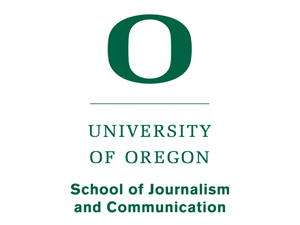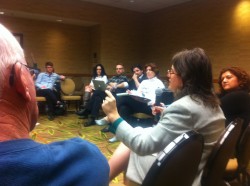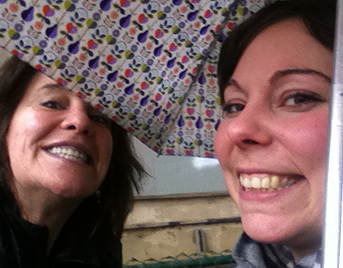The Journalism Accelerator’s (JA’s) blog reports on a broad range of experiments unfolding in the field. Evolving daily, news and community publishers across journalism networks share much common ground, but have unique brands and market challenges. Posting content on the beat of news, we’re excited by the passion of publishers and hope to document some of the creative ways the business of news continues to re-imagine itself. The blog offers a range of feature content, much of it our reporting out to you what we’re learning from our experimentation across the JA. We think of the blog, related resources and featured items as compost that we hope helps fuel experiments, cross pollinating innovation and emerging practices with the wisdom of the field to seed new ideas.
Posted by Jo Ellen Green Kaiser on September 23, 2013
Topics:
Blog Distribution
“The expectation that collaboration can occur without a supporting infrastructure is one of the most frequent reasons why it fails.” –Fay Hanley Brown, John Kania and Mark Kramer, Stanford Social Review

Occupy New York staged in the financial district, directly across from the World Trade Center’s reconstruction effort. Credit Lisa Skube
Jo Ellen Green Kaiser, who leads The Media Consortium, has been going deep on collaboration in her work. Here, she generously offers a number of insights, with this the third of her three-part series:
News Collaborations:
Part I: What do we mean by the word “collaboration”?
Part II: How does collaboration create impact?
Part III: How might collaboration shape the future of journalism? (see below)
There is a reason why the virtues of editorial collaboration have been championed by any number of media watchers in publications like Mediashift, NiemanLabs, J-Lab, and Journalism Accelerator. Collaboration is seen as the best way to leverage scarce resources in order to create more impact than any of the participants could do individually.
To innovate around impact, the journalism world will need philanthropists who understand that collaboration also requires resources, not only for the outlets that collaborate, but for the backbone organizations that support these collaborations.
In this post, I’ll detail the Media Consortium’s 2012 May Day collaboration to demonstrate how one type of high-impact collaboration can be organized, the investment ours required, and the return it offers. (more…)
Posted by Jo Ellen Green Kaiser on August 8, 2013
Topics:
Blog Community
Jo Ellen Green Kaiser, who leads The Media Consortium, has been going deep on collaboration in her work. Here, she generously offers a number of insights, with this the second of her three-part series:

Might defining impact to reflect new market realities for journalism help blaze a new trail to sector level transformation? Credit: Lisa Skube
News Collaborations:
Part I: What do we mean by the word “collaboration”?
Part II: How can collaboration create impact? (see below)
Part III: How can collaborations shape the future of journalism? (coming next)
As Jo Ellen describes it, “‘Collaboration’ has become such a sexy term in the journalism world that centers and sites are being built around it. As I noted in my previous post, content sharing, resource sharing, and even joint reporting is not new. What excites those of us looking to the future of journalism is what I have called networked collaboration…
In a networked collaboration, a number of different outlets work together to produce original reporting around a particular topic. In vertical networks, that reporting is designed and supervised by one outlet; in horizontal networks, the work is co-operatively created, managed by a backbone organization with no editorial skin in the game…”
In this post we explore the implications of impact and look at a couple of different examples of networked collaborations. With some rich context around how news providers may gain more yield by breaking down what impact means, and potential ways to create more of it. (more…)
Posted by Jo Ellen Green Kaiser on July 24, 2013
Topics:
Blog Community
 To scale impact, invest in networks.
To scale impact, invest in networks.

Jo Ellen Green Kaiser is the executive director of The Media Consortium. Green-Kaiser’s rich background includes a BA from Yale, a PhD from the University of California, with an impressive body of work across numerous independent magazines; she is a leading figure in Jewish media and an expert on the Jewish social justice movement.

Jo Ellen Green Kaiser, who leads The Media Consortium, has been going deep on collaboration in her work. Here she generously offers a number of insights, with this the first of her three part series:
News Collaborations:
Part I: What do we mean by the word “collaboration”?
Part II: How does collaboration create impact?
Part III: How can collaborations shape the future of journalism?
With collaboration at the center of the JA’s work, we’ve followed Media Shift’s Collaboration Central work with interest. As well as others who are monitoring new models of collaboration emerging across the news and information spectrum. Civic engagement “table” development methodology is part of the DNA that inspired the JA’s cross network emphasis (“beyond the usual suspects”). Inspired by wildly successful state organizing efforts, collaboration in this instance fueled by a philanthropic community where funders worked in partnership to build infrastructure to deliver commonly held objectives, leveraging the existing capabilities of civic organizations already existing in the marketplace. Taking out all partisan attachment (progressives were the architects of this infrastructure) – the simple genius of this: How to deploy the power of civic good networks around common aims – respectful of unique missions – to deliver the combined capabilities of unique specialization already creating small scale impact in the marketplace? (i.e. content delivery, craft, community conduit, social, business, technology, product development, topical expertise, etc.) Last year about this time the JA was looking at the combination of revenue and sustainability related to collaboration. Taking this a step further, we’re revisiting this asking others where they see the greatest impact around networked collaboration. As well as asking, what are the barriers slowing progress?
In this post, Jo Ellen explores new working definitions of collaboration and opportunities to consider for deeper impact, leveraging collaboration to unleash the combined power of networks in more intentional and strategic ways. (more…)
Posted by Lisa Skube on May 15, 2013
Topics:
Blog Education

A new digital era points to new possibilities for journalism to evolve, survive and thrive. Weigh in on what you think is possible. Credit: Lisa Skube
In this post, the JA is reaching out to students and recent journalism school graduates to learn how they hope to, or are applying, their educations. We invite your revelations, reflections or suggestions, from the classroom to the field, what is your J-school experience? This is an open call for students (and recent grads) to share your comments.
Your input helps the JA bring fresh perspective “from the source” to help give the University of Oregon School of Journalism and Communication’s team the ability to consider your needs as they design their new Center for Journalism Innovation. Your ideas will help us think proactively about how a new Center might be optimized to fuel your success, as you help us reimagine journalism’s future.
How do students of journalism today hope to gain the skills and insight to deliver new forms of journalism that thrive? What most excites you about journalism and your place in it? And what most frustrates you as you think about your future in journalism?
(more…)
Posted by Lisa Skube on May 3, 2013
Topics:
Blog Education

University of Oregon

Since its launch in June 2011 the Journalism Accelerator has been developing, growing and refining a network to examine emerging business practices for journalism from multiple vantage points. In late April 2013, the JA was awarded an assignment from the University of Oregon’s School of Journalism and Communication (SOJC) to produce a market scan to help inform its new Center for Journalism Innovation and Civic Engagement (working title). The Center will be based out of the beautiful Turnbull Center in Portland Oregon, also headquarters for U of O’s digital media master’s degree.
The purpose of the market scan is to get a sense of how schools of journalism are addressing the need for innovation to sustain journalism in the digital age. The JA will apply its crowd sourced, qualified conversation techniques for data collection (on and offline). We will synthesize the information to guide discussion around the mission and vision of the new SOJC Center.
We’ve been finalizing the work plan, having inspirational strategy sessions, rounded out with preliminary discussion across peers and journalism verticals. And the sampling has begun!
We’ll be posting a series of reports this month, this being the first. We anticipate two more posts with specific questions for you to address. Join us in this information quest, as we share back with you the bounty of our findings in pursuit of new knowledge. (more…)
Posted by Nicole Staudinger on April 26, 2013
Topics:
Blog Distribution

Hilary Niles weighs in at the "Building Better Media Policy Reporting from the Ground Up" strategy session in Denver, at the Media Reform conference. Credit: Lisa Skube

In early April, JA participated in the Media Reform event, as Josh Stearns, the Journalism and Public Media Campaign Director for Free Press, described it: “A conference of [hundreds] of grassroots media makers.” JA met and talked with dozens of organizers, journalists and policy experts, attended great panels, and had the additional opportunity to meet with a number of leaders such as Jo Ellen Green Kaiser, executive director of Media Consortium; Lark Corbeil and Kimberly Lavender of Public News Service; Dan Moulthrop and Jill Miller Zimon of The Civic Commons; Tom Glaisyer of the Democracy Fund; Journalism That Matters leaders Michelle Ferrier and Peggy Holman; and digital media expert and journalism veteran Steve Outing, in addition to many, many others paired with numerous inspiring hallway conversations.
Covering the event across social channels, the JA designed social coverage to convey the powerful ideas of the people who came to share, learn and compare notes. Building a narrative across social platforms opens up new strategic ways to participate in content, deepen connections and offer important context. Here’s an overview on different ways you might tap into social channels, to develop your own content stream, build a rich narrative, expand your network and bring more return for the investment. (more…)
Posted by Lisa Skube on April 2, 2013
Topics:
Blog Policy

JA’s Lisa Skube (left) and Nicole Staudinger at 2012 SXSW braving torrential rain. We’ll be taking two umbrellas to Denver. Credit: Lisa Skube

This week, the JA heads to the Media Reform Conference in Denver, brought to us by the good folks at Free Press. The JA gets to be one of the hundreds of participants joining with “Award-winning artists. Hollywood luminaries. Visionary activists. Veteran journalists. [and] D.C. heavyweights.” In addition to the Free Press Media Reform Conference that runs April 4th – 7th in Denver, Journalism that Matters will host “Journalism is Dead; Long Live Journalism” to discuss and consider fresh possibilities for the Front Range news ecosystem. Here’s a useful post from Patrick Kitano featured on Street Fight today focusing on the JTM Denver conference in which he outlines what he hopes to learn while there.
This post is a quick overview of some of the things JA is stoked to do while in Denver at the Free Press event, luminaries we hope to meet, and things we can’t wait to learn more about! We welcome your comments on what you hope to take away, or bring, to the upcoming gathering of great minds and disruptive discussion. (more…)
Posted by Jamison Taffel on March 22, 2013
Topics:
Blog Technology

The goal of responsive web design is a seamless experience across devices.

Responsive design is the big buzz of 2013. If 2012 was foretold to bring prosperity based on the Chinese zodiac, Mashable’s prediction for 2013 forecast a big year for responsive design, presenting a significant paradigm shift in the web design and development world where previously we were restricted by browser or device. With the adoption of responsive design, websites are now engineered to be “device-agnostic,” meaning that it doesn’t matter what device you’re using to view a site, you’re still viewing it in a way that was intentionally designed. The user experience can be controlled across platforms and devices: smart phones, tablets, laptops, PCs, or even a smart TV. In this post we’ll discuss the background and purpose of responsive design, why it is touted as creating a better user experience for media consumers, as well as offer a few tips to convert your site and resources we have found useful where you can learn more. (more…)
Posted by Nicole Staudinger on March 1, 2013
Topics:
Blog Distribution

For JA's social expert Nicole Staudinger, monitoring social is a daily practice. Sharing our best practices with you, what tools do you think we should try?

2012 was a huge year for social. According to Folio’s Greg Levitt, “2013 is shaping up to be the first year that social media eclipses search as the leading source of referral traffic to publishers.” Social media management has become an essential super power to connect with audiences through content and to contextually appeal to readers.
A comment posted on JA by Christopher Sailus (of Sailus Mortgage) makes the point: “Utilizing Twitter to create a market audience can be wildly successful at a very low budget.” But considering most publisher or journalist’s existing work load, how can writing you’ve already produced efficiently build followers, promote deeper content and respond to the needs of your online community in a sustainable and strategic way?
Here on JA, we’ve gathered a treasure trove of free tools that we typically use daily for social monitoring, listening and response. These tools, when used consistently, are invaluable in improving our ability to be responsive to the targeted messages we share and receive, by optimizing (and integrating) the use of our social channels. This is the first, in what will be a series of posts over the year, to share what we’re learning to help you unleash the power of social to deepen your success. (more…)
Posted by Lisa Skube on February 22, 2013
Topics:
Blog Experiments

Started in 2009, the Breaking News Network curates the media and blog feeds in 350-plus cities worldwide to create a real-time ticker tape of social-media-sourced news in each city. The noncommercial network is unique in supporting each city’s civic groups, arts organizations and causes by providing them with a free media voice to connect with their community.

The JA had the opportunity to participate in the recent Street Fight Summit in New York City. While there, Breaking News Network (BNN) founder Patrick Kitano introduced himself.
When BNN was launched three years ago to give voice to community causes, Kitano brought a unique knowledge from early experiments using Twitter (2006 – 2009) and social media to develop hyperlocal community information networks for the real estate market. Focusing on social at the outset, Kitano was “cobbling together” segmented lists on Twitter before Twitter had even created “lists.” (For context, Twitter launched in July of 2006.) This early social community development revealed new ways that Kitano found effectively enabled an active, community-sourced and locally driven information network.
Kitano sees BNN providing a shared social channel – one community, one voice, one cause at a time – with promise of doing good for others by supporting civic groups, local causes and arts organizations. (more…)




 To scale impact, invest in networks.
To scale impact, invest in networks.













